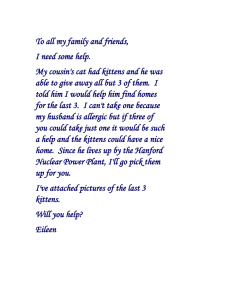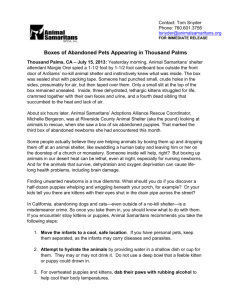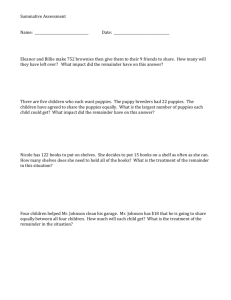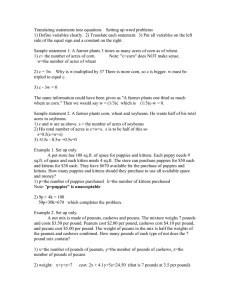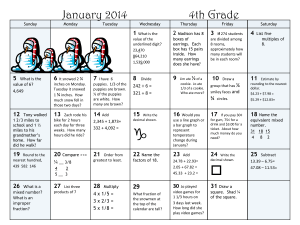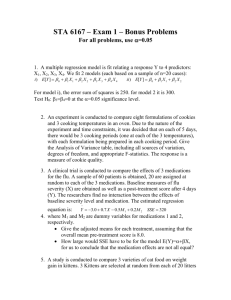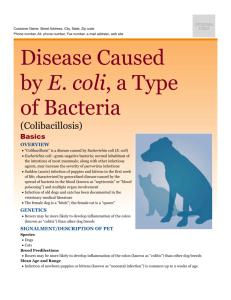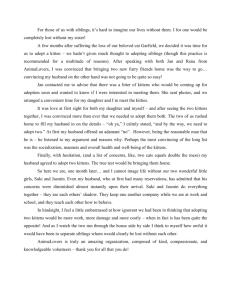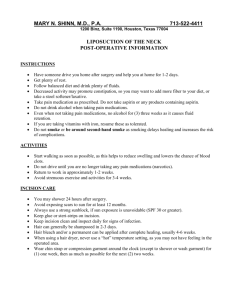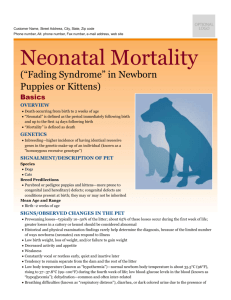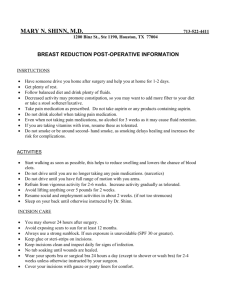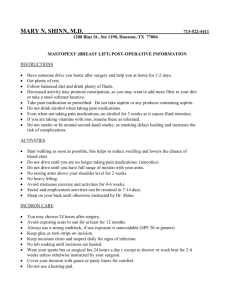Discharge Instructions: post pediatric spay/neuter
advertisement
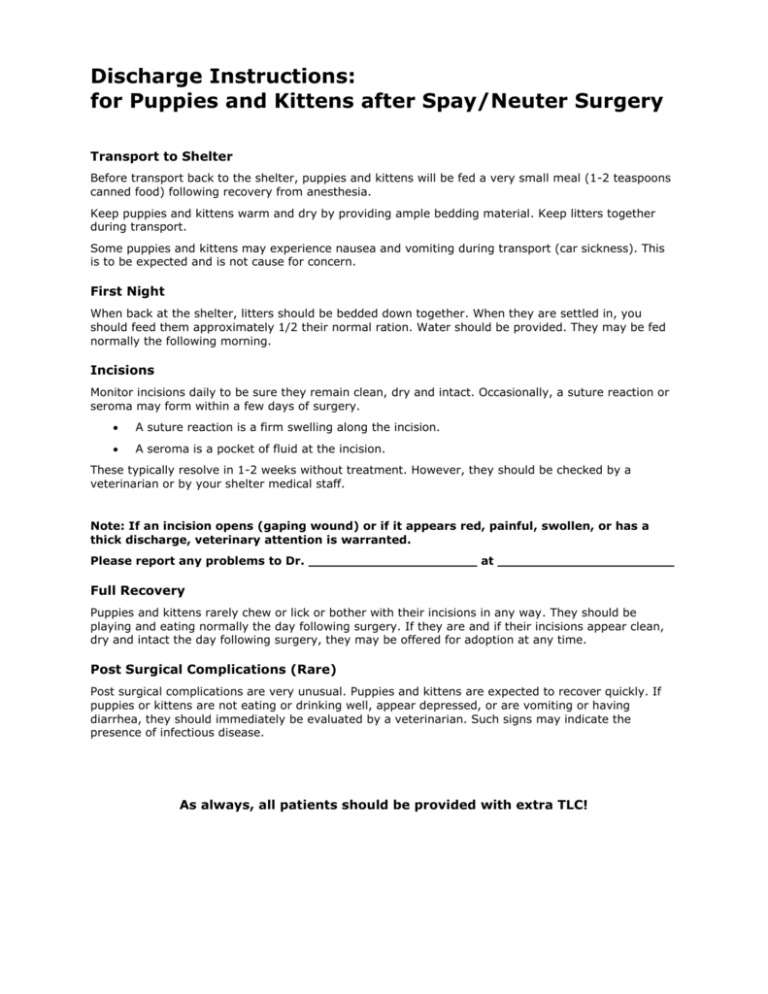
Discharge Instructions: for Puppies and Kittens after Spay/Neuter Surgery Transport to Shelter Before transport back to the shelter, puppies and kittens will be fed a very small meal (1-2 teaspoons canned food) following recovery from anesthesia. Keep puppies and kittens warm and dry by providing ample bedding material. Keep litters together during transport. Some puppies and kittens may experience nausea and vomiting during transport (car sickness). This is to be expected and is not cause for concern. First Night When back at the shelter, litters should be bedded down together. When they are settled in, you should feed them approximately 1/2 their normal ration. Water should be provided. They may be fed normally the following morning. Incisions Monitor incisions daily to be sure they remain clean, dry and intact. Occasionally, a suture reaction or seroma may form within a few days of surgery. A suture reaction is a firm swelling along the incision. A seroma is a pocket of fluid at the incision. These typically resolve in 1-2 weeks without treatment. However, they should be checked by a veterinarian or by your shelter medical staff. Note: If an incision opens (gaping wound) or if it appears red, painful, swollen, or has a thick discharge, veterinary attention is warranted. Please report any problems to Dr. _____________________ at ______________________ Full Recovery Puppies and kittens rarely chew or lick or bother with their incisions in any way. They should be playing and eating normally the day following surgery. If they are and if their incisions appear clean, dry and intact the day following surgery, they may be offered for adoption at any time. Post Surgical Complications (Rare) Post surgical complications are very unusual. Puppies and kittens are expected to recover quickly. If puppies or kittens are not eating or drinking well, appear depressed, or are vomiting or having diarrhea, they should immediately be evaluated by a veterinarian. Such signs may indicate the presence of infectious disease. As always, all patients should be provided with extra TLC!
